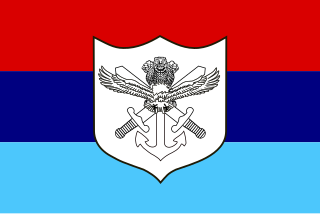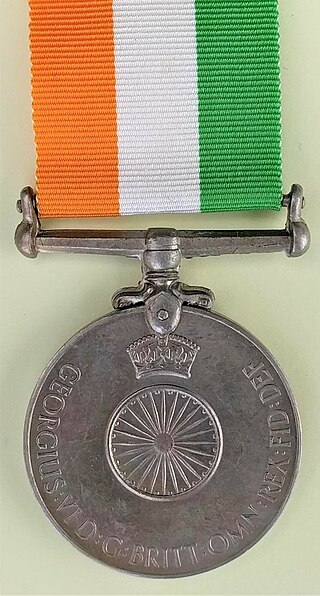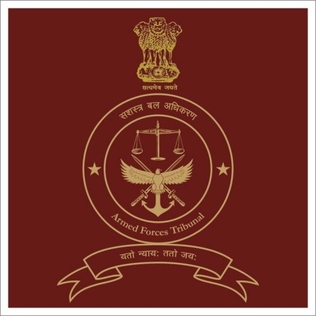
The British Armed Forces, formally known as His Majesty's Armed Forces, are the military forces responsible for the defence of the United Kingdom, its Overseas Territories and the Crown Dependencies. They also promote the UK's wider interests, support international peacekeeping efforts and provide humanitarian aid.
Major is a senior military officer rank used in many countries. When used unhyphenated and in conjunction with no other indicators, major is one rank above captain in armies and air forces, and one rank below lieutenant colonel. It is considered the most junior of the senior officer ranks.

The chairman of the Joint Chiefs of Staff (CJCS) is the presiding officer of the Joint Chiefs of Staff (JCS). The chairman is the highest-ranking and most senior military officer in the United States Armed Forces and the principal military advisor to the president, the National Security Council, the Homeland Security Council, and the secretary of defense. While the chairman of the Joint Chiefs of Staff outranks all other commissioned officers, the chairman is prohibited by law from having operational command authority over the armed forces; however, the chairman assists the president and the secretary of defense in exercising their command functions.
The title chief of staff identifies the leader of a complex organization such as the armed forces, institution, or body of persons and it also may identify a principal staff officer (PSO), who is the coordinator of the supporting staff or a primary aide-de-camp to an important individual, such as a president, or a senior military officer, or leader of a large organization.
Armed Forces Act (AFSPA), 1958 is an act of the Parliament of India that grants special powers to the Indian Armed Forces to maintain public order in "disturbed areas". According to the Disturbed Areas Act, 1976 once declared 'disturbed', the area has to maintain status quo for a minimum of 3 months. One such act passed on 11 September 1958 was applicable to the Naga Hills, then part of Assam. In the following decades it spread, one by one, to the other Seven Sister States in India's northeast. Another one passed in 1983 and applicable to Punjab and Chandigarh was withdrawn in 1997, roughly 14 years after it came to force. An act passed in 1990 was applied to Jammu and Kashmir and has been in force since.

The Chief of Army Staff (COAS) (unofficially known as the Army Chief) is a statutory position in the Indian Army held by a four star general. As the highest-ranking officer to serve solely in the Indian Army, the chief is the professional head of the ground forces and a key adviser to the Minister of Defence. The COAS, in a separate capacity, is also a member of the National Security Council and thereby an advisor to the president and the prime minister. The COAS is typically the highest ranking army officer in the Indian Armed Forces, unless the Chief of Defence Staff and/or the Chairman Chiefs of Staff Committee is an army officer.

Republic Day is the day when India marks and celebrates the date on which the Constitution of India came into effect on 26 January 1950. This replaced the Government of India Act 1935 as the governing document of India, thus turning the nation into a republic separate from British Raj. The constitution was adopted by the Indian Constituent Assembly on 26 November 1949 and came into effect on 26 January 1950. 26 January was chosen as the date for Republic Day as it was on that day in 1930 when the Declaration of Indian Independence was proclaimed by the Indian National Congress.
Indian Army Ranks can be broadly classified into three categories: Commissioned Officers, Junior Commissioned Officers and Other Ranks.

The Chief of the Air Staff (India), known also as the Air Force Chief, has been the title of the professional head of the Indian Air Force since 1950. The CAS is a statutory position in the Indian Armed Forces held by the most senior officer of the Air Force, and is usually the highest ranking air officer of the Indian Armed Forces unless the Chief of Defence Staff is an officer of the aerial branch.

The Ministry of Defence (MoD) is charged with coordinating and supervising all agencies and functions of the government relating directly to national security and the Indian Armed Forces. The President of India is the ceremonial commander-in-chief of the armed forces of the country. The Ministry of Defence provides policy framework and resources to the armed forces to discharge their responsibility in the context of the defence of the country. The Indian Armed Forces and Indian Coast Guard under the Ministry of Defence are primarily responsible for ensuring the territorial integrity of India.

The Indian Armed Forces are the military forces of the Republic of India. It consists of three professional uniformed services: the Indian Army, Indian Navy, and Indian Air Force. Additionally, the Indian Armed Forces are supported by the Central Armed Police Forces, Indian Coast Guard and Special Frontier Force and various inter-service commands and institutions such as the Strategic Forces Command, the Andaman and Nicobar Command and the Integrated Defence Staff. The President of India is the Supreme Commander of the Indian Armed Forces but the executive authority and responsibility for national security is vested in the Prime Minister of India and their chosen Cabinet Ministers. The Indian Armed Forces are under the management of the Ministry of Defence of the Government of India. With strength of over 1.4 million active personnel, it is the world's second-largest military force and has the world's largest volunteer army. It also has the third-largest defence budget in the world. The Global Firepower Index report lists it as the fourth most-powerful military.

The Territorial Army (TA) of India is an auxiliary military organisation of part-time volunteers that provides support services to the Indian Army. It is composed of officers, junior commissioned officers, non-commissioned officers and other personnel holding ranks the same as in the Indian Army, who also have civilian occupations. The role of the TA is to "relieve the regular army from static duties and assist civil administration in dealing with natural calamities and maintenance of essential services", and to "provide units for the regular army as and when required".
The Indian Military Nursing Services is a part of Armed Forces Medical Services (AFMS) of the Indian Army, first formed under British rule in 1888. An officer in the Military Nursing Services is granted Permanent Commission or Short Service Commission by a Govt Gazette Notification. The list of names are published in the weekly gazette of Government of India from time to time.

The High Altitude Warfare School (HAWS) is a defence service training and research establishment of the Indian Army. In 1948, the Indian Army established a ski school in Gulmarg that later became the High Altitude Warfare School, which specialises in snow–craft and winter warfare. It is located in an area which is prone to avalanches. Selected soldiers from the US, UK, Germany and other countries visit regularly for specialist training.

The Indian Independence Medal was instituted by the Dominion of India and approved by King George VI by way of a Royal Warrant dated 21 July 1948. It was a commemorative medal for service with the Indian armed forces at the time of independence in August 1947. Attached British personnel were eligible.

Central Armed Police Forces (CAPF) is the collective name of central police organisations in India under the Ministry of Home Affairs (MHA). These are technically paramilitary forces formerly known as Central Para-Military Forces (CPMF). Since 2011, India adopted the term "central armed police forces" to drop the word "paramilitary". These forces are responsible for internal security and guarding the borders.
Major general is a military rank used in many countries. It is derived from the older rank of sergeant major general. The disappearance of the "sergeant" in the title explains the apparent confusion of a lieutenant general outranking a major general, whereas a major outranks a lieutenant.

Armed Forces Tribunal is a military tribunal in India. It was established under the Armed Forces Tribunal Act, 2007.
Rank comparison chart of armies/land forces of Commonwealth of Nations states.

The Director General Armed Forces Medical Services (DGAFMS) is the head of the Armed Forces Medical Services of the Indian Armed Forces. A three-star rank medical flag officer, the DGAFMS is equivalent to Army Commanders and the Defence Secretary. The DGAFMS is the advisor to the Chief of Defence Staff (CDS) and the Minister of Defence on the medical requirements of the Armed Forces.













